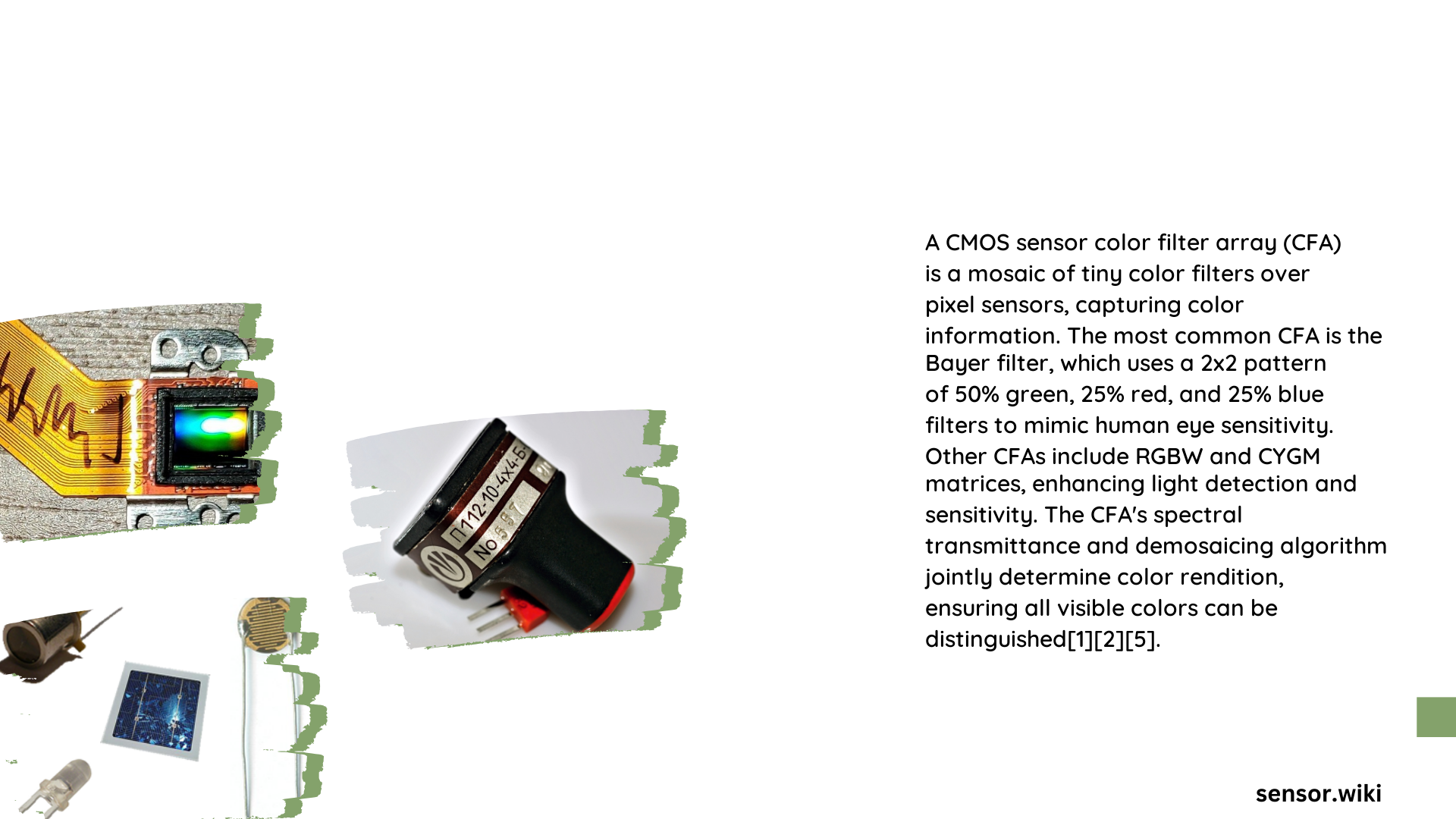CMOS sensor color filters are critical components in digital imaging technology that determine color reproduction, light sensitivity, and overall image quality. These sophisticated arrays of red, green, and blue filters strategically placed over photodiodes enable digital cameras and imaging devices to capture full-color images by filtering and interpreting light wavelengths across the visible spectrum. Understanding their complex mechanisms reveals the intricate science behind modern digital photography and imaging technologies.
What Are CMOS Sensor Color Filters?
CMOS sensor color filters represent sophisticated optical systems designed to transform light information into digital color representations. These microscopic filter arrays sit directly on top of semiconductor photodetectors, enabling precise color interpretation and image generation.
Key Components of Color Filter Arrays
| Filter Type | Composition | Light Transmission | Primary Characteristics |
|---|---|---|---|
| Bayer Filter | Red, Green, Blue | 70-90% | Most common, standard configuration |
| RGBW Filter | Red, Green, Blue, White | Enhanced sensitivity | Improved low-light performance |
| CYGM Filter | Cyan, Yellow, Green, Magenta | Optimized spectral response | Advanced color detection |
How Do CMOS Sensor Color Filters Work?

Spectral Response Mechanisms
CMOS sensor color filters operate through complex spectral filtering processes:
- Light Wavelength Separation
- Red filters: Peak around 600 nm
- Green filters: Peak around 550 nm
-
Blue filters: Peak around 450 nm
-
Quantum Efficiency Variations
- Green filters typically demonstrate highest transmission efficiency
- Red filters show enhanced quantum efficiency
- Blue filters often have lowest light detection capabilities
What Determines Color Filter Performance?
Critical Performance Metrics
Performance of CMOS sensor color filters depends on multiple factors:
- Pixel Density: Ranges from 1.1 µm to 2.0 µm
- Fill Factor: Typically 30-80%
- Dynamic Range: 60-80 dB in advanced sensors
- Noise Levels: Varies based on filter configuration
What Are Manufacturing Challenges?
Technical Production Considerations
Manufacturing CMOS sensor color filters involves sophisticated processes:
- Photolithography Techniques
- Precision Etching
- Material Selection
- Spectral Response Optimization
What Are Future Technological Trends?
Emerging Innovations
- Hybrid pigment/dye filter materials
- Enhanced spectral response algorithms
- Improved noise reduction techniques
- Higher quantum efficiency designs
Technical Specifications
Advanced Filter Characteristics
- Transmission Efficiency:
- Green Filters: 80-90%
- Red/Blue Filters: 70-80%
- Pixel Pitch: 1.4 µm and below
- Color Accuracy: Dependent on demosaicing algorithms
Practical Applications
Where Are CMOS Sensor Color Filters Used?
- Digital cameras
- Smartphone imaging systems
- Medical imaging equipment
- Scientific research instruments
- Automotive vision systems
Conclusion
CMOS sensor color filters represent a pinnacle of optical engineering, transforming light into digital information with remarkable precision. Continuous technological advancements promise even more sophisticated color reproduction capabilities in future imaging technologies.
